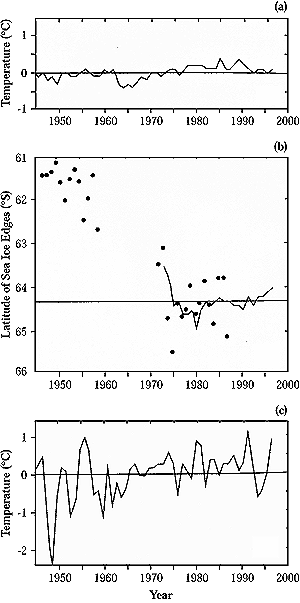
Figure 16-4: (a) Mean temperature anomalies
for Southern Ocean climate stations; (b) summer sea-ice extent
[dots are from estimates based on southernmost positions of whaling-factory
ships (de la Mare, 1997)]; (c) mean temperature anomalies of
coastal Antarctic climate stations (after Jacka and Budd, 1998).
|
Continued from previous page
Changes to below 1,000 m in the Arctic Ocean have been observed, with less
sea ice and freshening of the Beaufort Sea mixed layer (Maslanik et al.,
1996; and McPhee et al., 1998). Atlantic water inflow to the Arctic Ocean
has warmed (Carmack et al., 1995). The halocline, which isolates the
surface from this warmer Atlantic water, has grown thinner (Steele and Boyd,
1998). Data gathered from submarines indicate that sea-surface temperature (SST)
in the Arctic basin increased by 1°C over the past 20 years, and the area
of warm Atlantic water in the polar basin increased by almost 500,000 km2
(Kotlyakov, 1997). Field measurements in 1994 and 1995 showed consistent Arctic
seawater warming of 0.5-1.0°C, with a maximum detected in the Kara
Sea (Alekseev et al., 1997). It is not yet clear whether these changes
are part of low-frequency natural variability or whether they represent the
early impacts of long-term climate change.
Thickening of the active layer and changes in the distribution and temperature
of permafrost are further important indicators of warming in the Arctic. Permafrost
thawing has led to major erosion problems and landslides in the Mackenzie basin
(Cohen, 1997a) and has caused major landscape changes from forest to bogs, grasslands,
and wetland ecosystems in Alaska, affecting land use. In central and western
Canada and in Alaska, contraction in the extent of permafrost has occurred during
the 20th century (Halsey et al., 1995; Weller, 1998; Weller and Lange,
1999; Osterkamp et al., 2000). However, a cooling trend has been noted
for permafrost in eastern Canada (Allard et al., 1995; Allard and Kasper,
1998). Permafrost degradation during the 20th century in subarctic and boreal
peatlands of Quebec is discussed by Laberge and Payette (1995).
Temperatures at the top of permafrost along a several hundred kilometer north-south
transect in central Alaska warmed by 0.5-1.5°C between the late 1980s
and 1996. Thawing rates of about 0.1 m per year were calculated for two sites
(Osterkamp and Romanovsky, 1999). On the north slope of Alaska and in northwestern
Canada, the temperature-depth profile indicates a temperature rise of 2-4°C
over the past century (Lachenbruch and Marshall 1986). In the western Yamal
Peninsula, temperatures at a depth of 10 m in ice-rich permafrost increased
0.1-1.0°C between 1980 and 1998; the largest increases in Siberian
permafrost temperatures have occurred in relatively cold permafrost in the continuous
zone.
Palaeoclimate reconstructions based on dendrochronology also indicate a steady
increase in temperature during the past 150 years (Bradley and Jones 1993; Szeicz
and MacDonald 1995; see TAR WGI Chapter
2). Growth rings in Larix Sibirica from northern Siberia show that mean
temperatures during the 20th century were the highest in 1,000 years, exceeding
even those during the Medieval Warm Period (Briffa et al., 1995). Changes
in diatom assemblages in lake sediments in the High Arctic over the same period
also are thought to be a consequence of climatic warming (Douglas et al.,
1994).
Other changes in terrestrial ecosystems include northward movement of the treeline,
reduced nutritional value of browsing for caribou and moose, decreased water
availability, and increased forest fire tendencies (Weller and Lange, 1999).
There are altered plant species composition, especially forbs and lichen, on
the tundra. In the marine ecosystem, northern fur seal pups on the major Bering
Sea breeding grounds declined by half between the 1950s and the 1980s. In parts
of the Gulf of Alaska, harbor seal numbers are as much as 90% below what they
were in the 1970s. There have been significant declines in the populations of
some seabird species, including common murres, thick-billed murres, and kittiwakes.
Comprehensive interviews by Gibson and Scullinger (1998) have revealed notable
impacts on food sources and natural environments of native Alaskan communities.
Warmer climate has increased growing degree days by 20% for agriculture and
forestry in Alaska, and boreal forests are expanding northward at a rate of
about 100 km per °C (Weller and Lange, 1999).
